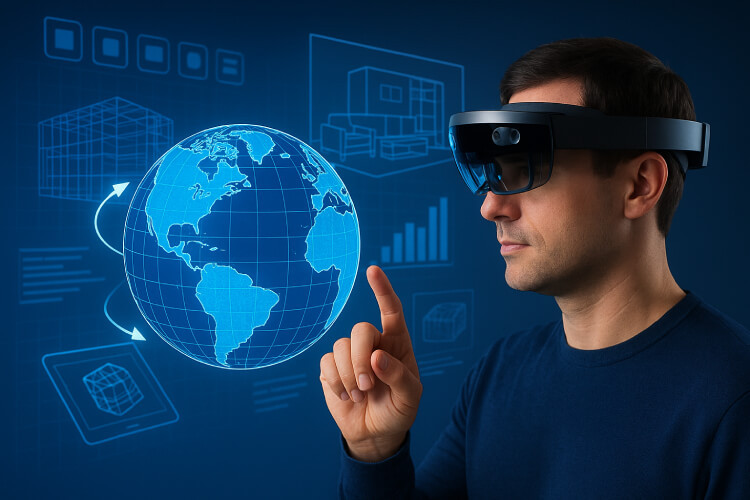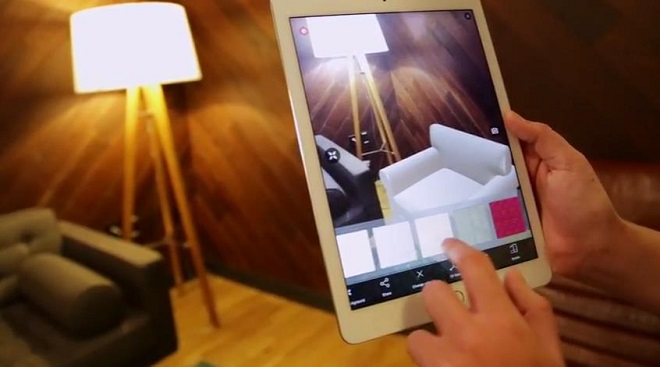Augmented Reality 2025: Trends, Market Size & Growth Stats
Insights | 08-05-2018 | By Mark Patrick

Originally published 08-05-2018 · Revised June 2025
Key Takeaways:
- Market boom: AR software & services soared from US $471 million (2017) to US $83.6 billion (2024), with IDC forecasting 38 % CAGR through 2030.
- Every–device access: LiDAR-equipped phones and tablets run ARKit 6 / ARCore 4, while headsets like Apple Vision Pro and Meta Quest 3 deliver full mixed-reality immersion.
- Real-world impact: From Boeing’s 40 % error-cutting assembly guides to IKEA’s room-scale furniture preview, AR now drives efficiency across industry, retail and logistics.
- Tooling explosion: 8th Wall, Niantic Lightship, Unity PolySpatial and Adobe Aero let brands launch Web-based AR experiences—no app download required.
Back in 2018 I wrote that “this may well be the year that augmented reality comes into its own.” Seven years later that headline finally feels undersold.
Unlike virtual‑reality (VR) rigs that still rely on dedicated headsets, today’s flagship smartphones ship with LiDAR scanners, depth cameras and on‑device neural processors. That means almost any current‑generation handset can anchor digital objects to real‑world surfaces with rock‑solid tracking. At the other end of the spectrum, purpose‑built head‑mounted displays—Apple Vision Pro, Meta Quest 3, Microsoft HoloLens 2 and Magic Leap 2—deliver room‑scale mixed‑reality (MR) experiences that simply did not exist when this article first ran.
AR versus VR (and now MR)
AR still “melds the real world with virtually super‑imposed content,” while VR still “replaces physical reality with a fully computer‑generated environment.” What is new is the industry’s embrace of mixed reality, a sliding scale where users can dial immersion up or down—Vision Pro’s Digital Crown being the poster child.
AR in Gaming—Then and Now
In 2018 I pointed to HADO, Pokémon Go and Snapchat lenses to show AR’s potential. Those titles remain popular, but the catalog has exploded: Niantic’s Monster Hunter Now moved ten million downloads in its first month; Meta’s Quest 3 lets players fend off swarms of virtual robots that crash through their living‑room walls; and Sony’s PlayStation AR Portal turns a coffee table into a co‑op dungeon crawler.
Tablets and stylish smart‑glasses from XREAL, Rokid and Ray‑Ban Meta are pushing the form factor ever closer to everyday eyewear, trailblazing an enriched experience where learning, understanding, convenience and fun feel limitless.
AR – The Next Big Thing (Only Bigger)
When this piece was first published, analyst IDC put 2017 AR revenues at US $471 million—a hefty 260 % jump on 2016. IDC’s 2024 tracker now values the market at US $83.6 billion and projects a 38 % CAGR through 2030.
The established tech giants clearly agree. Apple launched visionOS in 2024, Google continues to refine ARCore 4, and Meta’s Presence Platform gives Unity developers hand‑, eye‑ and body‑tracking APIs out of the box. Dedicated wearables keep shrinking, prices keep falling and the installed base keeps rising.
AR Game Changers—Enterprise to Everyday
Augment SDK offers brands and retailers the capability to personalise their customers' shopping experience by embedding AR product visualisation into their e-commerce platforms. By ChristinaC. - Own work, CC BY-SA 4.0, Link
Companies and organisations as large and traditional as General Electric, the Mayo Clinic, and the US Navy are pioneering AR in their own ways to reach consumers and other businesses or make military operations more efficient. For retail applications, users can preview makeup or clothing on themselves or see how furniture looks in their home. The overlaying of AR objects enables those in construction and architectural fields to have the best sense of how their work will appear when implemented in real-life areas, like public spaces and buildings.
In factories, traditional training methods are being put aside as wearable AR devices are developed so that workers can follow superimposed assembly production instructions conveniently within their line of vision. Instead of looking at a textbook and then an assembly line, factory operatives can see context-specific instructions that change as they go through the steps of a process.
Going to the office will take on new meaning with AR office spaces. Logging onto smart glasses will superimpose digital objects layered over the real-world work settings - including apps, bookmarks, digital notes or virtual screens. All anyone else would see as they pass by is a person sitting, typing or making some hand gestures to open and use AR apps.
Consumer AR-rich apps are already here and proving their value. IKEA Place and Amikasa apps can show how furniture looks like in one’s home. Amazon’s AR View follows the same concept, but with various consumer products, such as speakers or LCD TVs. U.S. home improvement retailer Lowe’s has developed an AR app that acts as a virtual tape measure, so users can determine the dimensions of walls and furniture with a smartphone camera.
Everything in the 2018 list still applies; here’s what’s new:
-
Industrial & Field Service – Boeing wire‑harness technicians cut error rates by 40 % using HoloLens 2; General Electric turbines are assembled with holographic part call‑outs.
-
Logistics – DHL reports 25 % faster picking after rolling out smart‑glasses across 22 warehouses.
-
Healthcare – Mayo Clinic surgeons rehearse patient‑specific procedures on 3‑D overlays; AccuVein projects vascular maps straight onto skin.
-
Retail & Home – IKEA Place and Amazon View now leverage LiDAR for centimetre‑accurate furniture placement, while Home Depot Project Color previews paint finishes and Lowe’s Measure turns depth cameras into digital tape rules.
-
Navigation – Google Maps Live View and Apple Maps AR Walk pin arrows to pavements; automotive HUDs project speed and hazard data directly onto windscreens.
Another app called Ink Hunter relies on AR to allow users to preview tattoos on their own body. Even navigation is getting a re-vamp, with Apple’s ARKit allowing turn-by-turn directions via hologram.
Toolchain Update
In 2018 the article highlighted Augment SDK. That platform is still around, but has been joined by a vibrant ecosystem including 8th Wall WebAR, Niantic Lightship, Unity PolySpatial, Adobe Aero and Apple Reality Composer Pro—all of which let brands launch room‑scale product demos straight from a phone browser.
The Bigger AR Picture—Revisited
Data production has skyrocketed since 2018 and on‑device generative‑AI models now craft context‑aware overlays in real time—live language subtitles hover over conversations, and complex machines show step‑by‑step repair animations.
AR still bridges the 2‑D/3‑D divide better than any other medium: anyone who ever wrestled with a flat‑pack manual can now point a phone at the parts pile and watch animated instructions in situ.
We remain at the beginning, but the trajectory is clear: as devices shrink, power consumption falls and cloud rendering off‑loads heavy graphics, AR will weave itself into everyday workflows for travellers, shoppers, students and engineers alike.
Read More:
Now hear this. Hearable tech takes a leap forward
Hearables have evolved from basic earbuds into multifunctional in-ear wearables that enhance sound, filter noise and track fitness.
Virtual Reality, Augmented Reality and the Future
Charts how VR and AR are converging, unlocking breakthroughs for gaming, enterprise and education.
How AR Will Make Us Safer Drivers
Head-up displays and real-time overlays turn windscreens into safety dashboards for next-gen vehicles.
How Augmented Reality Will Enhance the Way We Work
Shows how AR headsets boost productivity with live instructions, remote assistance and immersive 3-D data.


